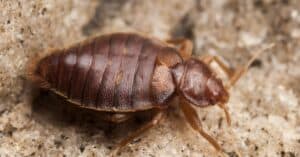Finding a bed bug on your mattress bed can be shocking and anxiety-inducing. Yikes! What if you are dealing with the dreaded bed bugs? If you have a possible pest infestation or you are just simply curious to differentiate bed bugs from other kinds of bugs, this article is for you. Here, we will go over 10 other tiny bugs that look like bed bugs. We’ll learn all about them, including their appearance, size, diet, habitat, and, of course, how to differentiate them from bed bugs. Let’s figure out what’s plaguing your home!
1. Cockroach Nymphs (Blattodea)
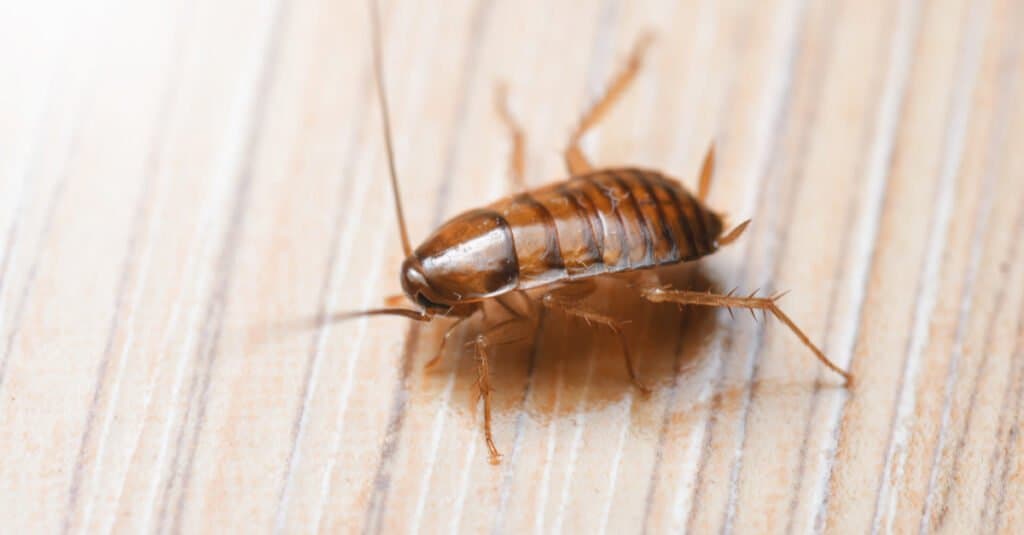
Cockroach nymphs are essentially baby cockroaches.
©bamgraphy/Shutterstock.com
There are three stages in a cockroach’s life: egg, nymph, and adult. Cockroach nymphs are essentially baby cockroaches. Unlike other bugs, cockroaches do not start out life as larvae; instead, they crawl around as miniature versions of themselves. Cockroach nymphs are oval-shaped and have six legs and long antennae. The nymphs come in various sizes and their coloring depends on the species, ranging from red-brown and dark brown to tan and even black! Since cockroach nymphs have similar coloring to bed bugs and do not yet have wings, they’re often confused for bed bugs.
In terms of diet, like adult cockroaches, these nymphs will eat almost anything – from food scraps and hair to decaying matter. Just like their adult counterparts, cockroach nymphs are hardy and can adapt to many environments. They especially love to hide in dark, humid areas during the day. In a home, you might find them behind kitchen appliances, in cracks and crevices, or near food sources. As they prefer warm environments, they often hang out in kitchens and bathrooms.
How to Distinguish Cockroach Nymphs From Bed Bugs
While both cockroach nymphs and bed bugs are small, oval-shaped insects with six legs, there are key differences in their appearance, behavior, and habitat. Bed bugs are typically smaller and have shorter antennae, whereas cockroach nymphs have larger and longer antennae. In terms of size, the bed bug is generally smaller. Both pests have similar coloring, but the bed bugs are always reddish-brown, whereas cockroach nymphs can come in a range of colors, including reddish-brown, tan, black, and brown.
Bed bugs primarily infest areas where people sleep, such as mattresses and bed frames, as they feed on blood. On the other hand, cockroach nymphs usually hide around the kitchen or bathroom areas where there is food and moisture. Also, if you have bed bugs, you might notice itchy, red welts on your skin.
2. Booklice (Psocoptera)
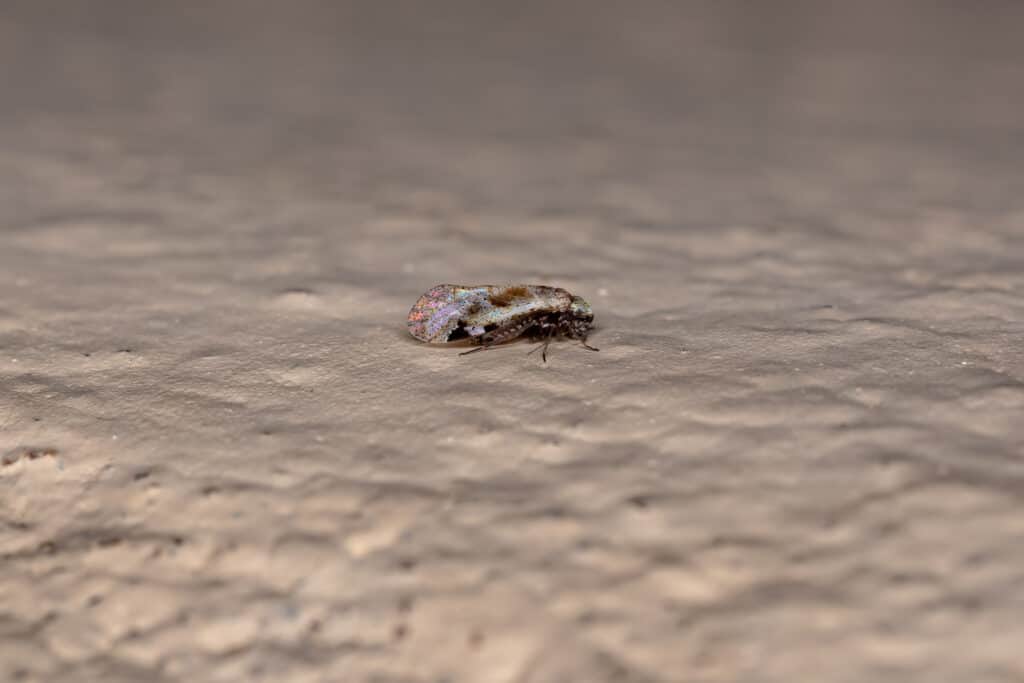
A tiny bug that looks like a bed bug is the booklouse.
©iStock.com/ViniSouza128
Booklice are extremely small and difficult to spot as they only grow to about 1- 2 mm or about 1/16 of an inch. They sometimes look like tiny specks of dust with legs, as their coloring varies from translucent or pale white to gray or brown.
Unlike bed bugs and cockroaches, these insects are actually not interested in human blood or food scraps. Instead, they feed primarily on fungi, mold, and algae, but are also known to feed on starchy household items like grains, book bindings, and wallpaper glue. As booklice thrive in moisture and undisturbed places, you’ll often find them in libraries or bookcases where they linger around books and papers, as their name suggests. They also inhabit damp places like bathrooms, basements, and kitchens.
How to Distinguish Booklice From Bed Bugs
Both booklice and bed bugs are small bugs that invade homes, but these two insects couldn’t be any more different. Firstly, in terms of appearance, booklice are super tiny and are often translucent in color, as opposed to the reddish-brown coloring of bed bugs. Booklice also have soft-bodied exoskeletons and are more hourglass-shaped, whereas bed bugs have more of an oval-shaped body, almost like an apple seed. These two insects also inhabit different parts of the home. Booklice love damp areas like inside books and in walls and they don’t bite, while bed bugs usually swarm about the bed and bite humans in the night to feed on blood.
3. Spider Beetles (Ptininae)
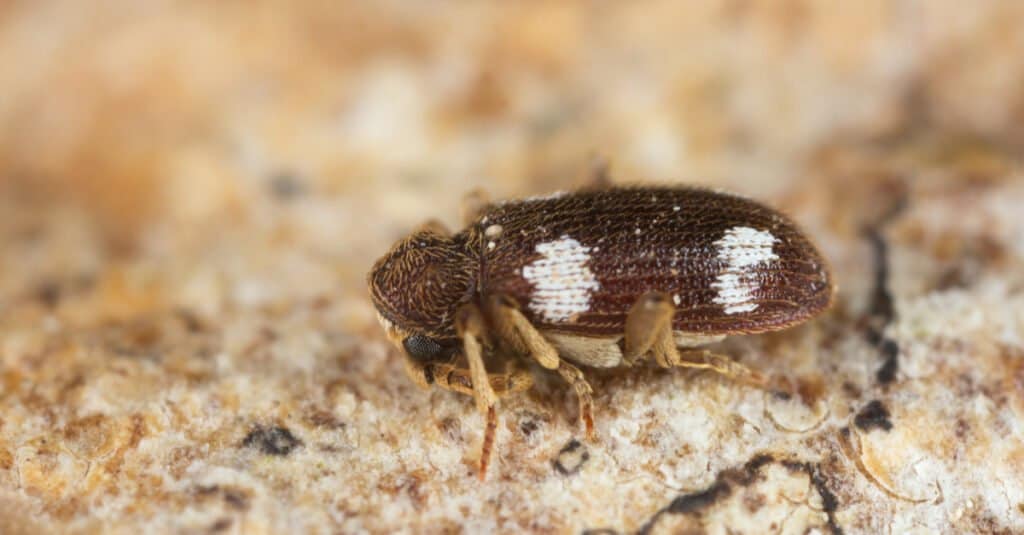
Ranging in size from 1 to 3 mm, spider beetles look like tiny bed bugs.
©Henrik Larsson/Shutterstock.com
Spider beetles are named so due to their similarity in appearance to small spiders or large mites. These beetles have rather long legs and relatively large, rounded abdomens. They range in size from 1 to 3 mm in length and have oval bodies that have a hump. Spider beetles look very similar to bed bugs at first glance, as they both have oval-shaped bodies that are reddish-brown in color.
As for their diet, spider beetles are scavengers through and through. They’ll eat almost anything they can find, including a wide range of pantry items like grains, cereals, dried fruits, and even pet food. They are also known to feast on dead insects, animal droppings, and natural fibers like wool and silk. These beetles live in cozy hidden spots, such as cracks, crevices, and dark corners of your home, and usually come out to forage at night.
How to Distinguish Spider Beetles From Bed Bugs
Despite bed bugs and spider beetles having very similar anatomical structures and colors, they can be differentiated by the distinctive hump-back appearance that spider beetles have. On the other hand, bed bugs have flat, oval-shaped bodies. In a way, at first glance, spider beetles may look like bed bugs that have just fed! Their size varies, too, as bed bugs are slightly larger at around 5 to 7 mm, and spider beetles only grow to about 1 to 3 mm. But, of course, the easiest way to distinguish between the two is their habitat. Notably, spider beetles can be found all over the home, as they don’t rely on blood for food.
4. Fleas (Siphonaptera)
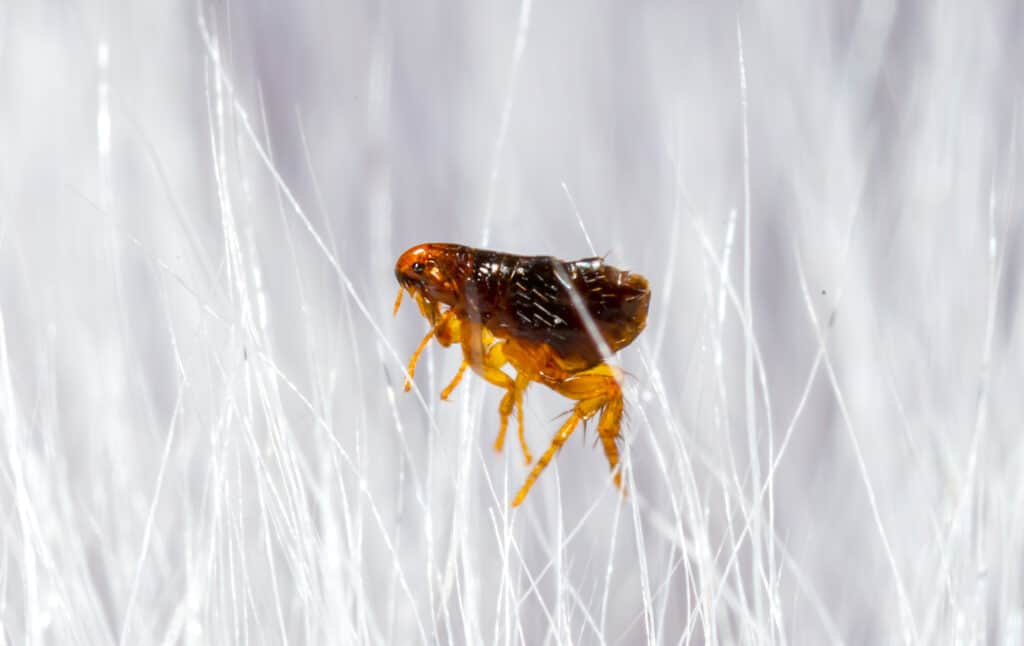
A flea is a common tiny bug you’ll see in homes with pets.
©Vera Larina/Shutterstock.com
If you’re a pet owner, you’ll already be very familiar with fleas. Fleas are tiny, blood-sucking insects that can transmit a variety of different diseases. Though they are usually just about 1 to 3 mm in size, they can cause skin reactions in both humans and pets. Like bed bugs, fleas are reddish-brown in color and are flightless. But this doesn’t stop them from leaping into the air with their strong legs. A fun fact about fleas is that they can jump up to 150 times their body length!
Fleas are pesky insects and generally feed on the blood of warm-blooded animals, including our pets and us. However, some species may even infest reptiles! These annoying pests really know no bounds.
How to Distinguish Fleas From Bed Bugs
Fleas often get confused with bed bugs because both are small, reddish-brown, wingless insects that can cause itchy rashes on your skin. However, fleas generally look skinnier and longer rather than flattened, and they have an amazing ability to jump from one object or host to another. Fleas are also much smaller than bed bugs, at just 1 to 3 mm long. Conversely, bed bugs can grow up to 5 to 7 mm. In terms of habitat, fleas will generally find their host within the dense fur coat of your pets, while bed bugs tend to inhabit beds and couches.
5. Ticks (Ixodida)
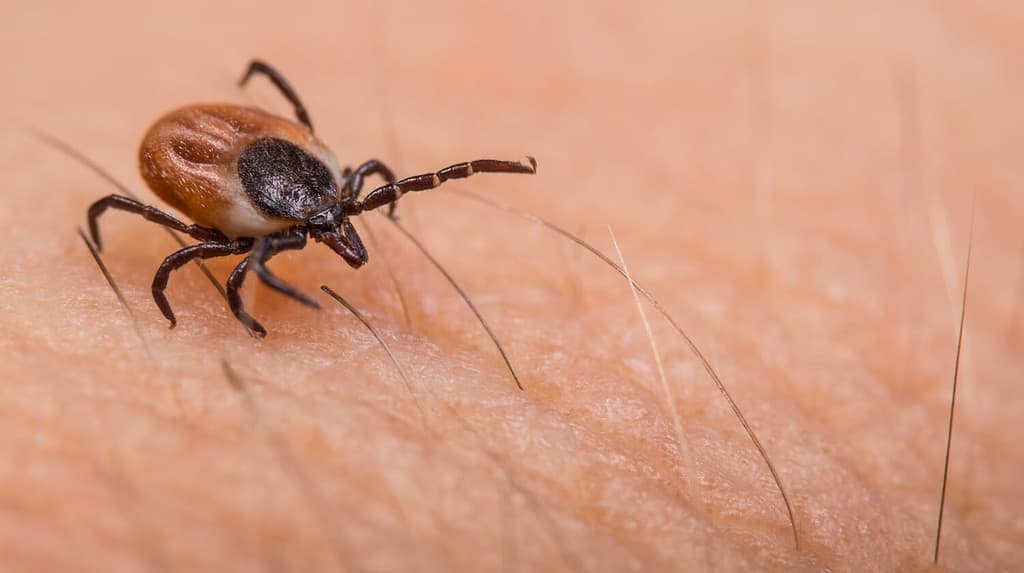
Like bed bugs, ticks love to feed on human blood.
©KPixMining/Shutterstock.com
A parasitic arachnid, ticks are also bloodsucking creatures that may pose a threat to you and your pets. These tiny insects reproduce very quickly and are experts in hiding in dark, humid places of your home and in the grass. These opportunistic insects have a flat, oval-shaped body with eight legs. They can be in brown or black color depending on their age and species and can vary in size from a small pinhead or a big fingernail. A tick’s body size varies, especially after having a full blood meal. Their body will be engorged with blood as they feed, and they may become 200 to 600 times larger! Ticks can be found hiding in grassy patches and wooded areas, waiting for a host to come by.
How to Distinguish Ticks From Bed Bugs
Bed bugs and ticks may often be mistaken for each other, but one of the main differences between the two is the number of legs. As arachnids, ticks have 8 pairs of legs, while bed bugs only have 6. But since these two pests are super tiny, you may not be able to count their legs with the naked eye. Other ways to distinguish ticks from bed bugs include looking at their body shape. Ticks have a more oval and scaly appearance, especially when engorged, whereas bed bugs have a flattened, oval shape.
If you have an indoor pet who sleeps with you, it may be difficult to differentiate between these two bugs as they both may be found near your bed or on the couch. However, another difference is that bed bugs are active at night, whereas ticks are active both day and night.
6. Pill Bugs (Armadillidiidae)
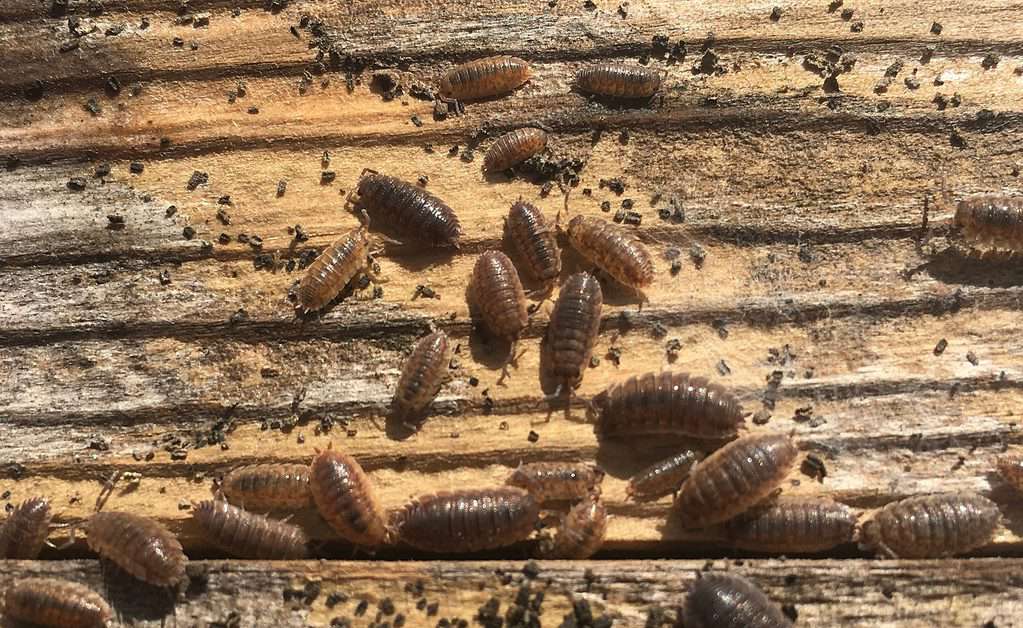
Known by many other names, pill bugs look similar to bed bugs at first glance.
©Ellianne/Shutterstock.com
Pill bugs have a very unique look but may still be mistaken for bed bugs, as certain species may be similar in both size and color. Woodlice or pill bugs look like they have an armored tank with a segmented, oval-shaped body. They are typically gray or brown in color.
While their name suggests otherwise, pill bugs aren’t bugs. In fact, they are crustaceans, which explains their numerous legs! Interestingly, they are the only crustaceans that fully live out of water. However, they still require a lot of moisture to survive. Therefore, they inhabit locations that are damp and filled with organic material, such as your garden.
Unlike roaches and other blood parasites, pill bugs do no harm to humans. Instead, they solely feed on decaying plant matter like leaves and wood. They are generally found in gardens, under piles of leaves, or under a rock, but an individual may find its way indoors by accident.
How to Distinguish Pill Bugs From Bed Bugs
If you know how a pill bug looks, you may already know how to spot the difference between one and a bed bug. Their larger, segmented body is visibly different from a bed bug, which has a more flat, oval-shaped body. Pill bugs also have 14 legs, 8 more than the bed bug. However, since pill bugs can greatly range in size, a small one that has found its way to your home may be hard to distinguish from a bed bug at first glance.
Another interesting fact about pill bugs is that they roll themselves into a ball under threat, hence their other common name: roly-poly. On the other hand, the bed bug would just scatter away.
7. Bat Bugs (Cimex pilosellus)
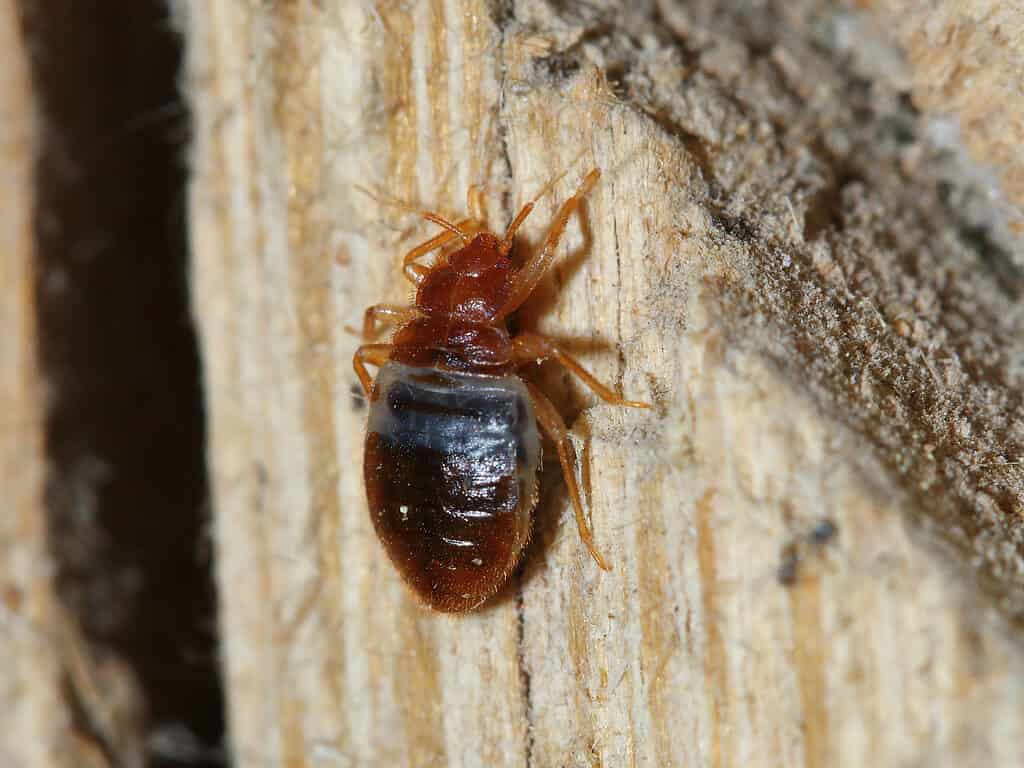
Bat bugs are oval-shaped insects that love to feed on the blood of bats and other hosts.
©iStock.com/Zdenek Macat
As their name suggests, bat bugs are a type of blood-sucking parasite that feeds on bats as its main host. However, in some cases, they may even feed on other birds or even humans if there is a lack of bats in their vicinity! They look very similar to bed bugs as they are closely related. Just like bed bugs, they have oval-shaped bodies are are reddish-brown in color. These two bugs also grow to around the same size as well!
In homes, bat bugs are often found where bats are, such as in attics, chimneys, or abandoned buildings. However, if you remove the bats from your home, the bat bugs may stay and wonder about your home, looking for new hosts.
How to Distinguish Bat Bugs From Bed Bugs
Distinguishing between bat bugs and bed bugs can be tricky because they look very similar. However, there are subtle differences to watch for. Notably, bat bugs typically have longer hairs on their thorax, making them look hairier than bed bugs. Their hairs are often darker at the tips, which gives them a slightly two-toned appearance. However, with that said, this is generally difficult to see without the help of a microscope!
Furthermore, while both bugs feed on blood, bat bugs prefer bats as their primary hosts and may be found near bat roosts. Bed bugs, on the other hand, are more commonly associated with human hosts and are often found in and around beds and furniture.
8. Head Lice (Pediculus humanus capitis)
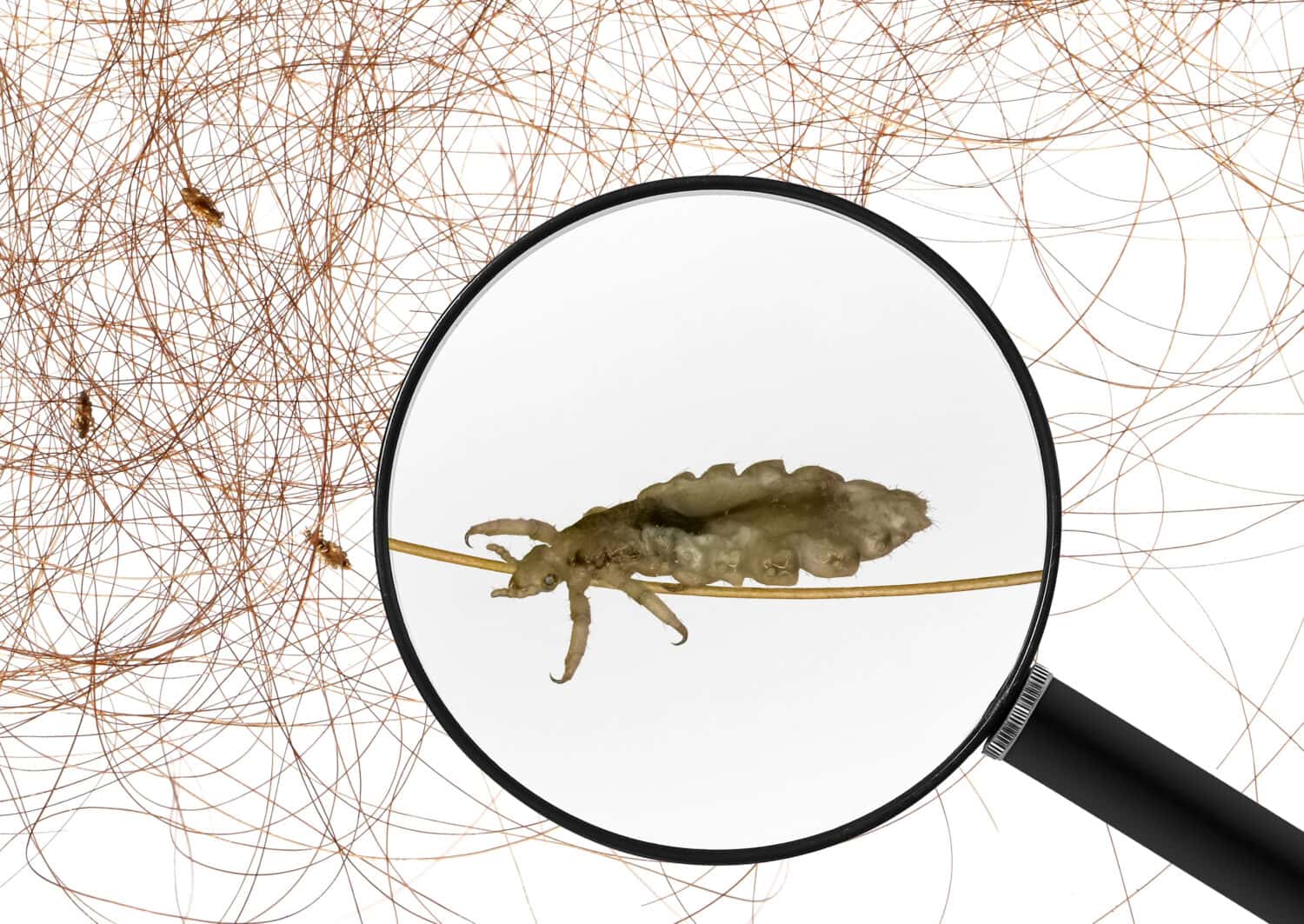
While both head lice and bed bugs feed on the blood of humans, there are a few ways to distinguish the two.
©Protasov AN/Shutterstock.com
Head lice are tiny, wingless insects that are often a source of anxiety for people all over the world. These tiny bugs cause itching and discomfort on the scalp due to their feeding habits. At first glance, head lice might be confused with bed bugs, primarily because of their small size and their tendency to hide in bedding and clothing. Plus, they’re both a pain to deal with!
Head lice are incredibly small, typically measuring between 2 to 4 mm in length. Also, they have an elongated and flattened body shape, usually a pale gray or tan color. In fact, they’ll look almost translucent when they haven’t fed on blood! Head lice are primarily active on the scalp and in hair, where they feed and lay eggs. They do not venture far from their host.
How to Distinguish Head Lice From Bed Bugs
Head lice and bed bugs can be difficult to distinguish from one another, as they are both tiny bugs that like to suck on human blood. However, there are a few notable differences. Firstly, head lice are smaller, at around 2 to 4 mm, as opposed to bed bugs, which are 5 to 7 mm long. Head lice are also pale gray or tan in color, while bed bugs are reddish-brown. Finally, the most notable difference between the two insects is that head lice infest the human scalp, whereas bed bugs live in crevices in mattresses and other furniture.
9. Carpet Beetles (Dermestidae)
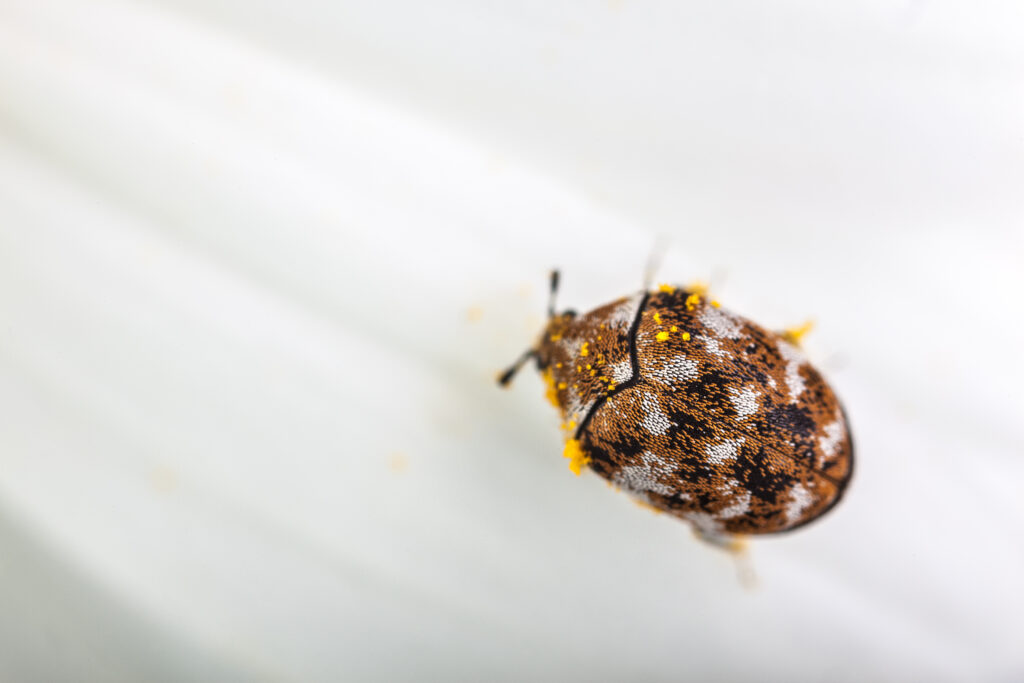
Another insect that looks like a bed bug is the carpet beetle.
©iStock.com/porpeller
Carpet beetles are a common household pest that feeds on natural fibers and can often be mistaken for bed bugs due to their small size and appearance, with an oval-shaped body. However, these beetles are smaller, measuring around 1 to 4 mm, and have a mottled pattern or are fully black in color.
These tiny bugs eat natural and animal-origin materials, such as furs, wool, silk, cotton, feathers, and leather. Interestingly, most carpets today are made of synthetic material, so carpet beetles are not too interested in them. But with that said, they may still infest your carpet if your synthetic carpet is filled with sweat, oils, food, and animal fur! Besides carpets, these pests can be found in closets and drawers, where they might be able to find fabrics and textiles.
How to Distinguish Carpet Beetles From Bed Bugs
Carpet beetles are typically smaller than bed bugs, measuring around 1 to 4 mm in length. They have an oval-shaped body, similar to bed bugs, but their coloring varies. While some carpet beetles are fully black, others have a mottled pattern of white, brown, and yellow scales. The main difference between these two bugs is that bed bugs are attracted to human blood, whereas carpet beetles are attracted to natural materials. These beetles also do not bite humans or feed on blood like bed bugs.
10. Mites (Acariformes)
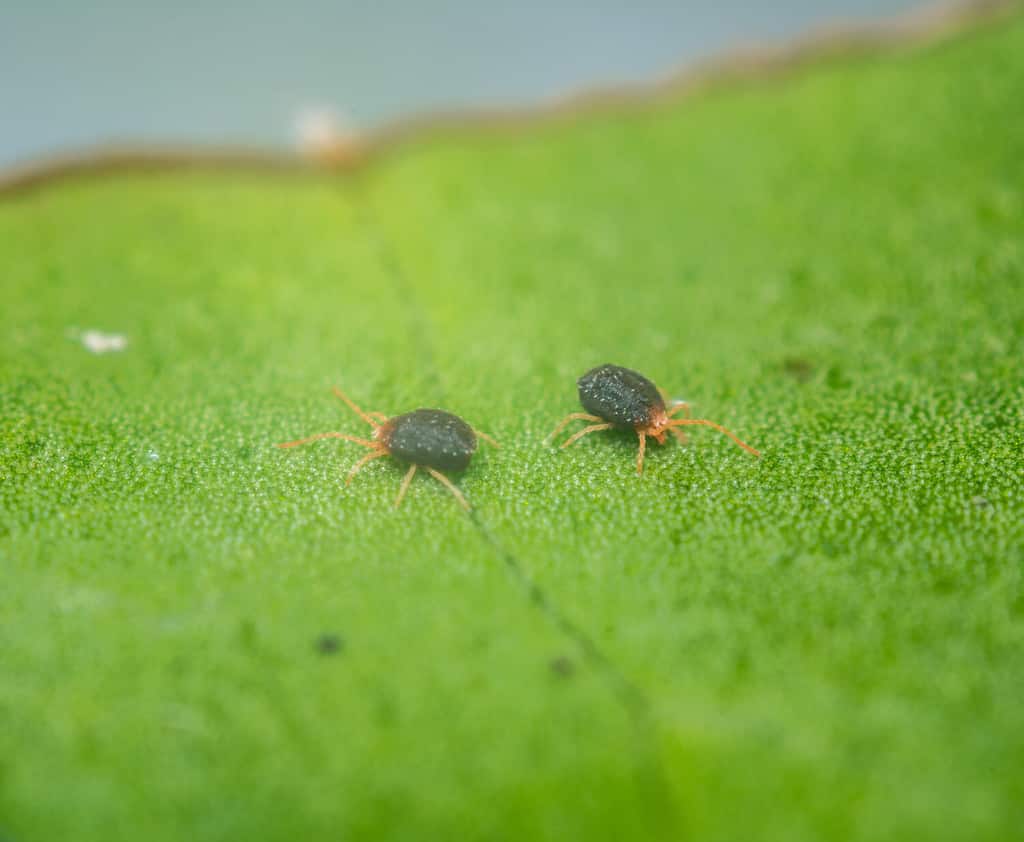
The final tiny bug that looks like a bed bug is the mite!
©Nik Bruining/Shutterstock.com
While not technically insects, mites are often confused with bed bugs due to their small size and presence in and around homes. Mites are incredibly small, with most species measuring less than 1 mm in length. For this reason, you can’t normally see them with the naked eye. These arachnids come in various body shapes, depending on the species. For example, some may be super elongated while others may be round or oval-shaped. Their coloring varies, too, from translucent to brown and black to reddish-brown.
Some species of mites are parasitic and can infest humans or animals, causing various skin conditions, but others can be found in soil or plants. Many mite species do not bite humans. But some mites, like the itch mite, can cause intense itching and skin rashes.
How to Distinguish Mites From Bed Bugs
Firstly and most importantly, mites are so small that you may not be able to see them without a magnifying glass. They measure less than an inch long, while bed bugs are much larger, at 5 to 7 mm. Mites also come in a variety of shapes, not just oval. They come in various colors as well. Notably, most mites do not bite humans, while bed bugs need human blood to survive.
Summary of Tiny Bugs That Look Like Bed Bugs
| Number | Bug | Taxonomy |
|---|---|---|
| 1. | Cockroach Nymphs | Blattodea |
| 2. | Booklice | Psocoptera |
| 3. | Spider Beetles | Ptininae |
| 4. | Fleas | Siphonaptera |
| 5. | Ticks | Ixodida |
| 6. | Pill Bugs | Armadillidiidae |
| 7. | Bat Bugs | Cimex pilosellus |
| 8. | Head Lice | Pediculus humanus capitis |
| 9. | Carpet Beetles | Dermestidae |
| 10. | Mites | Acariformes |
The photo featured at the top of this post is © Jay Ondreicka/Shutterstock.com
Thank you for reading! Have some feedback for us? Contact the AZ Animals editorial team.






